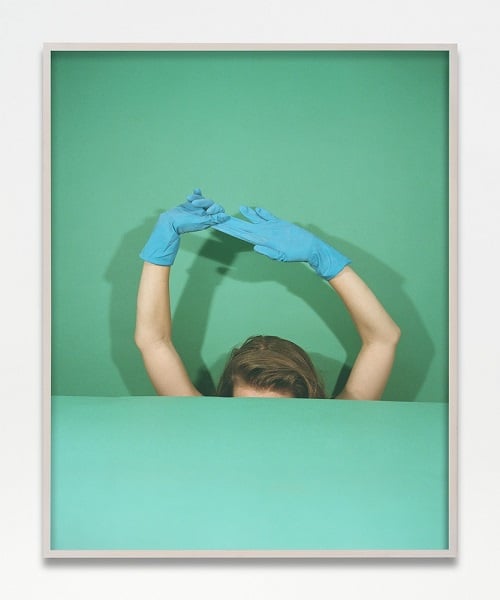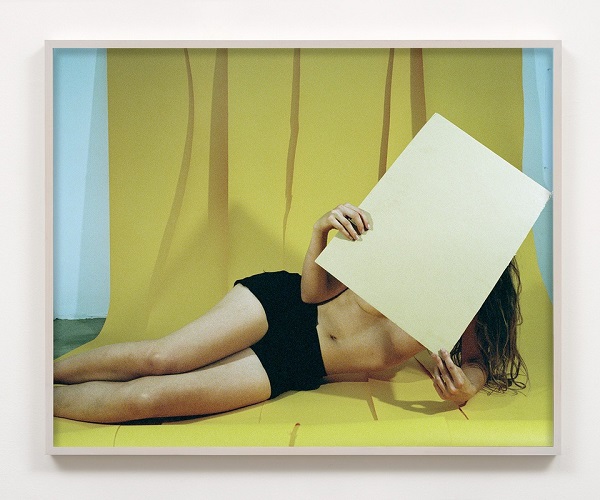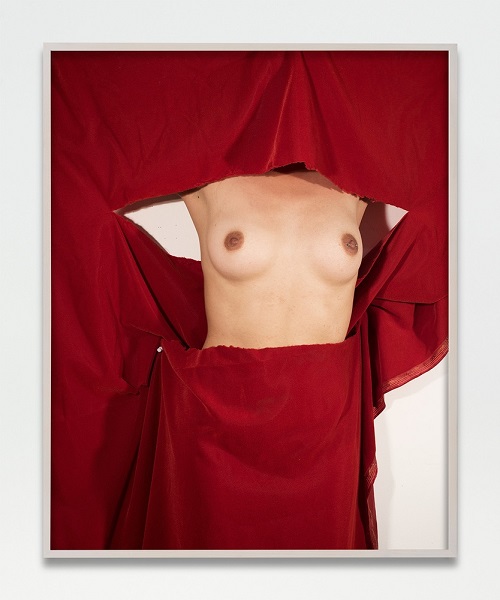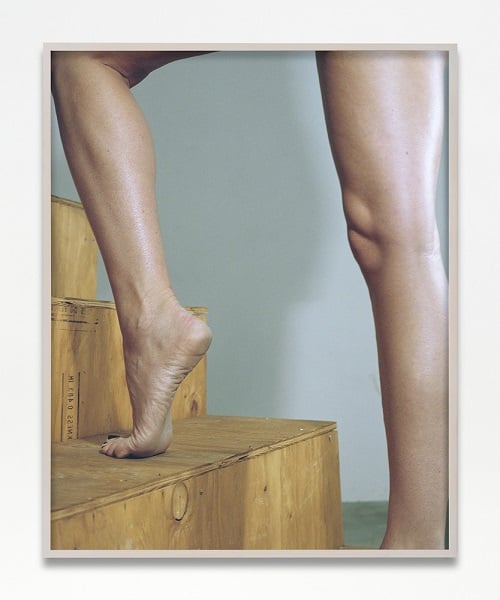Art & Exhibitions
The Surrogate Self-Portraits of Whitney Hubbs
The artist explores what it means to photograph the female body.

Image: Courtesy of M+B and the artist.
The artist explores what it means to photograph the female body.

Alyssa Buffenstein


Whitney Hubbs, Woman No. 1 (2016).
Image: Courtesy of M+B and the artist.
From fashion magazines to museum walls, the female form has been depicted as muse, source of inspiration, and object of desire. As a result, some women have to fight just to be in control of their own image. So it’s always empowering to see a woman artist exploring the ways her body can be turned into a picture. Or, in Whitney Hubbs’s case, her bodies.
Hubbs, a Los Angeles-based photographer whose mostly black-and-white oeuvre comprises disjointed self-portraits and minimal compositions, has a colorful new show, “Body Doubles,” opening March 19 at M+B in Los Angeles. This is her second solo show at the gallery, the first being 2013’s moody, high-contrast “The Song Itself is Already a Skip.”
For the new series, the artist instructed models to pose for the camera as if they were her.
“Body Doubles was inspired by an ongoing inquiry into studying the female form and the performative and directorial nature of making pictures of women’s bodies. The idea is that these women are stand-ins for myself and act accordingly to how I would perform in front of the camera,” Hubbs tells artnet News.

Whitney Hubbs, Woman no. 3 (2016).
Image: Courtesy of M+B and the artist.
“I wanted to use self-imposed parameters to see how one could make an interesting picture using repeated gestures just in the corner of a studio. It was my intention for the pictures to be crude and uncomfortable in nature, too,” she continues.
The images, a return to color photography after 10 years working in black and white, were made according to strict self-imposed rules, leaving certain elements of the final compositions to chance. Her parameters included shooting with low speed film, “pushing the film” (that is, underexposing it by setting the camera’s ISO rate higher than required by the film), and eschewing color correction.
“The result is a grainier print—an effect that intensifies the women’s gestures and performance,” Hubbs explains. “Everything feels a bit off, more raw.”

Whitney Hubbs, Woman no. 2 (2016).
Image: Courtesy of M+B and the artist.
At first glance, the photographs could indeed easily be mistaken for self-portraits, or at least as the artist’s body. The lonely, posed feeling of the studio shots recalls some of Cindy Sherman’s Untitled Film Stills, though they are more abstract—there are no characters here, no narratives. But to create these faceless, fragmented images, Hubbs stayed firmly behind the camera, instructing her models to act the way she would, if she were having her picture taken.
“It’s uncomfortable making pictures of myself. There is a loss of control that is very different from making pictures of other people. Being behind the camera, for this show, I had ideas of how I would pose and perform, but used women who were similar to me to sit in front of the camera,” she says.

Whitney Hubbs, Woman no. 7 (2016).
Image: Courtesy of M+B and the artist.
Whitney Hubbs’s Body Doubles is on view at M+B from March 19 until May 7, 2016.